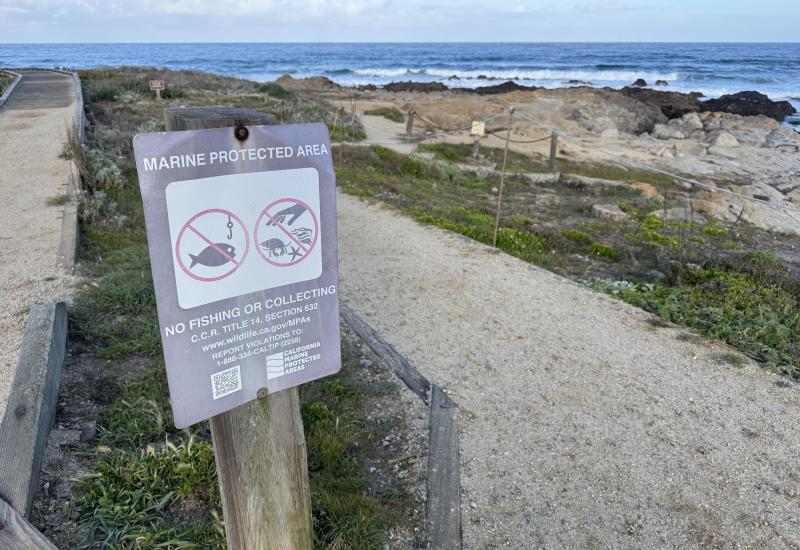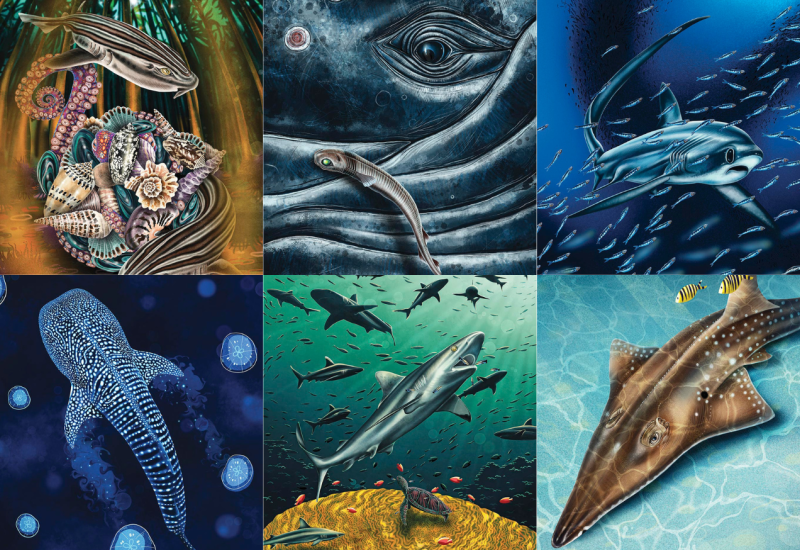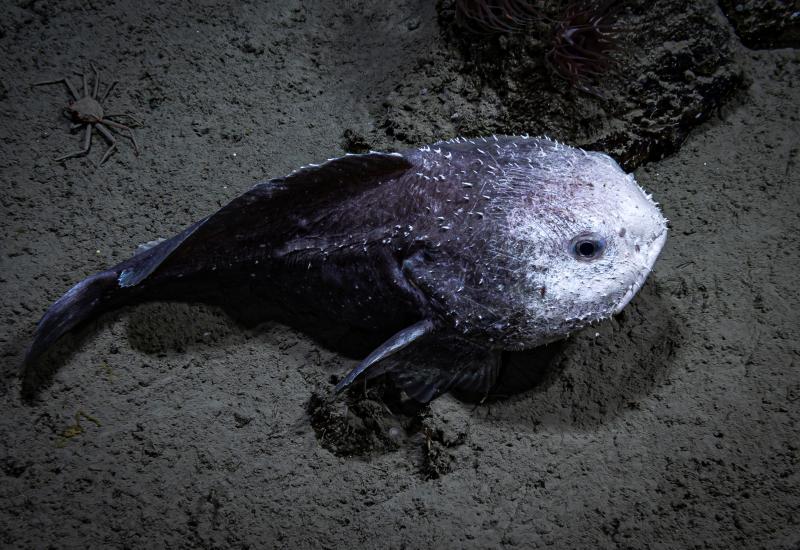Diving with—and Saving—North Carolina's Sand Tiger Sharks
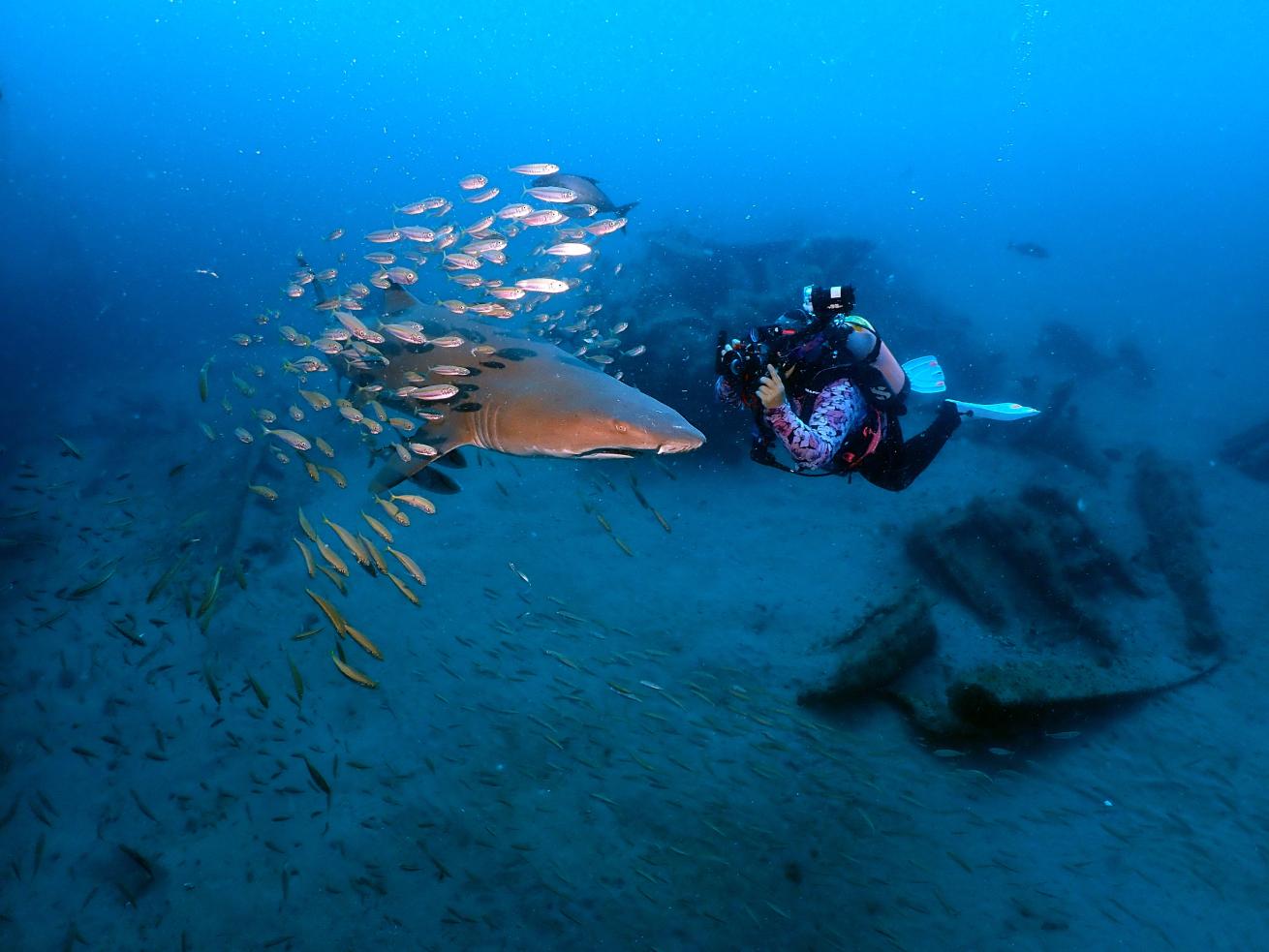
Steve BarlowDottie Benjamin Photographing a Sand Tiger Shark
From Fiji’s Beqa Lagoon to Tiger Beach in the Bahamas, shark ecotourism has rapidly expanded into a global industry. While multiple studies illuminate the conservation value of the movement, it’s not often that recreational scuba divers can say they actively contributed to the well-being of these vital animals. On North Carolina’s Crystal Coast, an 85-mile stretch of untamed coastline sometimes known as the southern Outer Banks, divers have the rare opportunity to give back while enjoying some of the best shark diving in the country. Thanks to Spot A Shark USA, divers can become citizen scientists, contributing to the understanding of sand tiger sharks’ population, movement and behavior.
Launched by the North Carolina Aquariums and their research partners in 2018, the program relies on divers to photograph, log and upload photos of any sand tiger sharks they see to the Spot A Shark website. Because sand tiger sharks have unique spots on their skin—comparable to our own fingerprints—these photos are either matched to another shark in the database using an AI algorithm by Wild Me (the same platform used to map whale shark patterns) or recorded as a new individual.
“It makes it possible for people who care about the ocean to participate in real science,” says Dr. Carol Seals Price, the managing director for Spot A Shark and a Conservation Research Coordinator at North Carolina Aquariums.
Related Reading: Shark-Diving Hot Spot Isla Guadalupe Permanently Closed
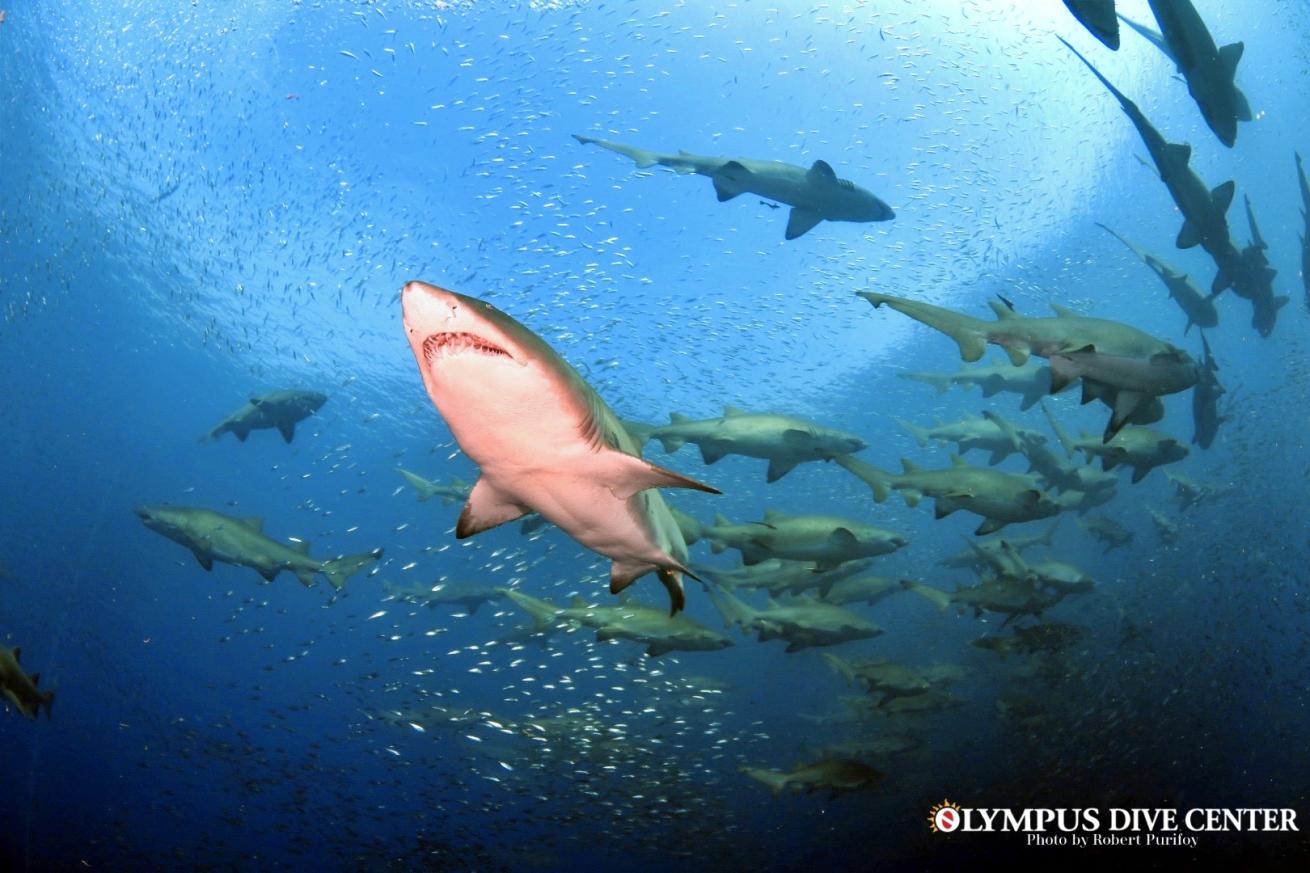
Robert PurifoySchool of Sand Tigers
To date, Spot A Shark has mapped nearly 2,500 different sand tiger sharks from more than 30 sites, most of which are shipwrecks. Home to the Graveyard of the Atlantic, the Crystal Coast’s 2,000-plus wrecks and nutrient-rich, life-sustaining currents create a paradise for divers, as well as the sand tiger sharks that search for vertical relief on the flat seabed. Once widely distributed worldwide along coastal waters, these charismatic sharks are now listed as a vulnerable species and critically endangered by the International Union for Conservation of Nature Red List. Their numbers have been decimated primarily by overfishing and bycatch. Protected in the United States under the Atlantic Fishery Management Plan since 1997, North Carolina is one of the best places to dive with them today.
Sand tigers also happen to make great dive buddies and photography subjects, particularly for those who might be a touch nervous about swimming around a six to ten foot animal known for its fixed grin of ragged teeth. Despite their resting shark face, sand tigers are famously docile. The stoners of the shark world, they’re content to share their space with divers, sluggishly swimming or hovering in place until they find a fish worth munching. This makes them, along with the Crystal Coast’s wrecks, one of the area’s most popular attractions.
According to Price, Spot A Shark’s efforts wouldn’t be possible without the local dive community and shops. “They’ve been a really strong supporter of the program from the beginning and provided a ton of ecological knowledge,” she says. “The owner of Olympus Dive Center, Bobby Purifoy, his dad discovered a lot of these wrecks. So they know the waters like the back of their hand.”
Related Reading: Go Big or Go Home! Best Dive Spots for Big Animals
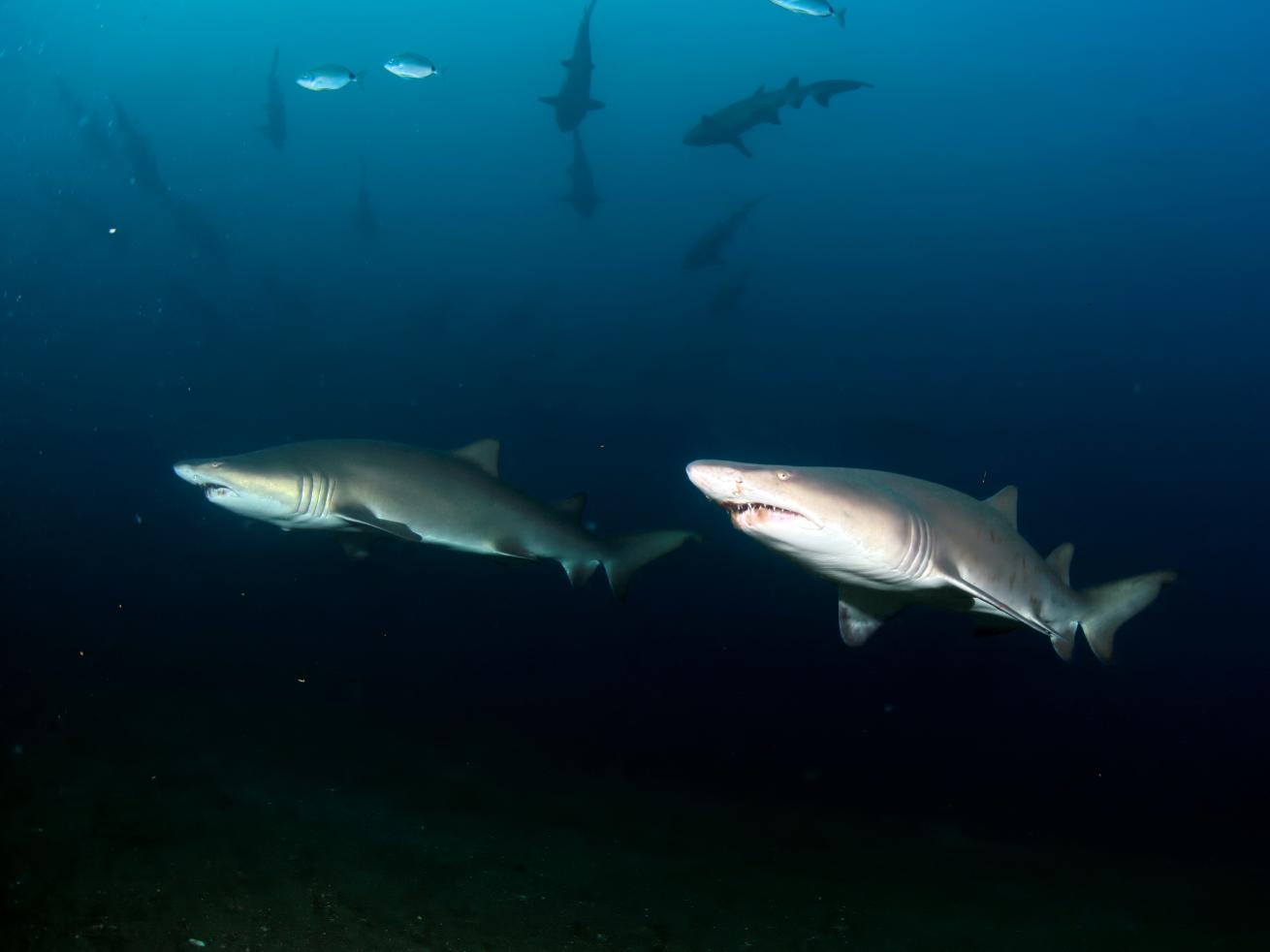
Doug ChampionMultiple Sand Tigers
Olympus and Discovery Diving also welcome Spot A Shark interns, students from North Carolina State University Marine Lab and University of North Carolina Chapel Hill who keep the program running along with Price, to help divers upload their images as soon as the boats dock so that no information is lost. If a photo doesn’t turn out, the data—such as where a shark was seen or its sex—is still helpful. Even so, one enterprising Olympus instructor decided to take matters into her own hands and help teach divers how to contribute more effectively by writing a PADI Distinctive Specialty Spot a Shark USA Photography Course in 2020. “I’ve been teaching our AWARE Shark Conservation class, and thought it would be a good idea to have a specialty for sand tigers, since not everybody knows how to dive with sharks or how to photograph them properly,” says Dottie Benjamin. “Now that people are traveling after COVID, it’s become much more popular.”
Despite their prevalence in aquariums, we know surprisingly little about sand tiger sharks—something that Spot A Shark hopes to change. After five years of study, Price and her team are close to seeing what citizen science will get them. “We've collected enough data at this point to say that sand tigers live every single stage of their life in North Carolina. We see lots of juveniles and we see adults, male and female. We see females with mating scars, so we know that they're mating here. And we see big girls, so we know that they're gestating here. When you have theories, you can’t just send people out in the ocean and say, ‘Oh, go dive.’ It’s so expensive and we don’t have a lot of people. You want to be intentional with all of your resources and really have a good hypothesis. That’s where we are right now—we’re just at the beginning of having enough data to test.”
With more understanding comes a better chance at conservation. Ultimately, this information will be passed on to The National Oceanic and Atmospheric Administration, an agency that can designate critical habitats for different species.
“If the sand tigers are using these sites to gestate and mate, they are obviously really important to the species.”
Related Reading: How Common Are Stranded Sharks Like the Frozen One in Cape Cod?
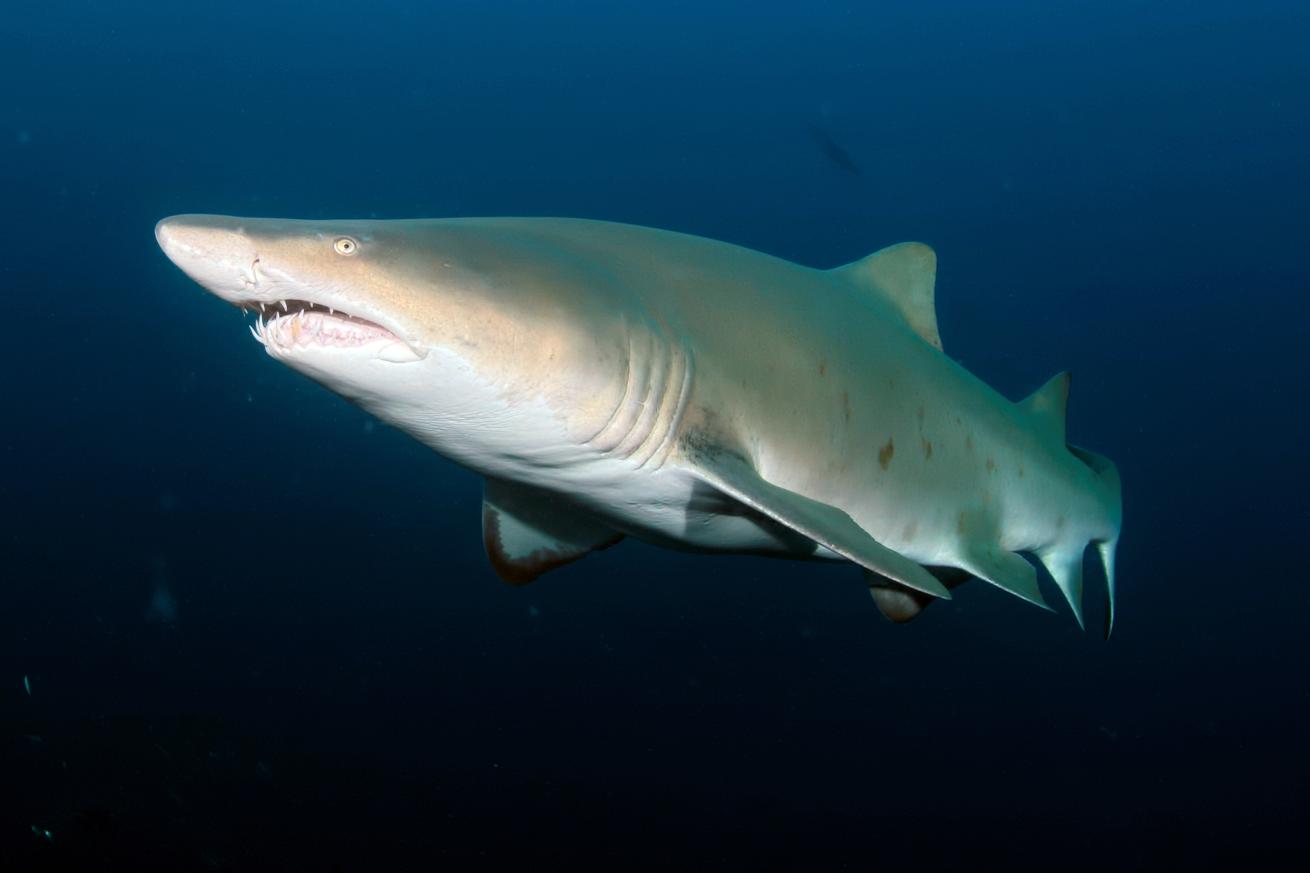
Doug ChampionSingle sand tiger
Where to Spot a Shark
Ready to dive? Here’s where you’re most likely to find sand tiger sharks on North Carolina’s Crystal Coast.
The Caribsea
Torpedoed by a U-boat in 1942, this WWII freighter rests in just 90 feet of water northeast of the shallow banks of Cape Lookout. At over 200 feet long, the Caribsea sustains a rich ecosystem of spadefish, amberjacks, Spanish mackerel and baitfish. Being Crystal Coast’s most famous shark dive, it’s not unusual to find 100-plus sand tiger sharks floating in the middle of the water column or piled up like a traffic jam on the ocean floor.
The Atlas
Another casualty of WWII U-boat activity, this tanker sank to its final resting place in 1942 southeast of the Beaufort Inlet. In 2019, an entangled ghost net tragically trapped and killed a sand tiger shark on the wreck, causing the resident sharks to disperse. According to local divers, the population has slowly returned since the net broke up—today, it’s not unusual to see 20-50 sharks per dive.
The Papoose
Lying upside down in 125 feet of water, the Papoose (a.k.a. The W.E. Hutton) is a largely intact, penetrable 412-foot tanker that was torpedoed by a U-boat in 1942. In addition to large schools of amberjack, barracuda and seabass, it’s a favorite of sand tiger sharks, which can typically be spotted 15-20 at a time. However, you never know what you’re going to get. On a dive this past February, hundreds of sand tigers made an appearance, in addition to a rare great white shark.
The Spar and the Aeolus
Due to their proximity, these neighboring dive sites—both part of North Carolina’s artificial reef program—are frequently considered one sand tiger shark habitat with individuals swimming between the two wrecks. Sitting in slightly shallower water at a max depth of 100 feet, the Spar is also a treasure trove for souvenir shark teeth. Just don’t be startled if the owner sneaks up behind you.
Related Reading: Where to Go Scuba Diving in South Carolina
Need to Know
The Crystal Coast’s peak dive season is May to September, with most operators, including Olympus Dive Center, offering daily trips. During these months, water temperature ranges from 68-80 degrees Fahrenheit. Visibility varies wildly depending on conditions. One day, it can be 15 feet, and the next 80 plus. Most divers will be comfortable in a 5mm suit during the summer.

